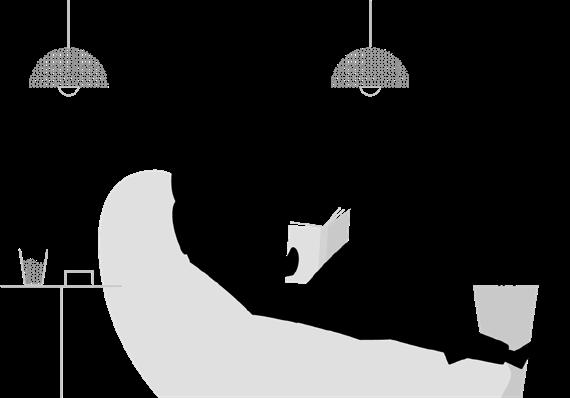FEATURE
From the Reading Chair: What emojis tell us about good dialogue As part of a new series on the nuts and bolts of writing, local editor and writing expert Laurel Cohn asks how the effect of emojis can be translated into a literary setting.
Do you use emojis when you text? I tried for a bit; never quite got the hang of it. But recently I’ve been prompted to consider why a fat, pink heart may say more to us than the word ‘love’ or ‘xx’, and what this tells us about good dialogue. Emojis have become an accepted way to communicate a thought or emotion succinctly. While they often act as shorthand, they can also enhance and amplify the meaning of the written word. We use emojis because we recognise the power of an image, however basic, to communicate something unsaid. We hanker for more than words. Our desire to communicate other layers of meaning had led to the development of more sophisticated emojis employing animated graphics and sound. We hanker for more than words and a twodimensional image. It is the same with dialogue on the page. The more I read, the more I realise that the key to good dialogue lies not in what is said between characters, but in the narrative snippets between quoted speech that reveal what is not said. If you think cinematically, these snippets are the camera showing us what the characters look like and how they are positioned in the setting. Body language is a huge part of face-toface communication, and without some sense of the unspoken physical exchange that occurs between characters, dialogue can fall flat. Simple descriptions of what characters look and sound like when they are speaking or listening are like adding emojis, enhancing the meaning of the words. For example, a character may be sitting, absentmindedly playing with the hem of her skirt as she timidly asks her best friend’s advice; or glaring at the fruit bowl, unwavering in his attention to the brown spot on the 14 | AUTUMN 2020 northerly
apple as he listens to his mother’s loud rebuke. You can picture the options for relevant emojis. Similar descriptive narration about the setting helps the reader to witness the scene and to feel the heat of the stuffy room, or sense the anticipation of a formal dinner setting. What lifts dialogue to the next level, however, is beyond what the camera shows us; it is the artistry of a good soundtrack. Music plays a key role in screen-based storytelling, adding emotional depth to a scene, prompting and guiding conscious and unconscious responses to what is being played out before us. On the silent page, a similar effect can be achieved by reference to a specific image or detail that resonates beyond what is being described, suggesting a character’s inner world in that moment, or more of their outer world, amplifying the dramatic tension. Such telling details enrich further the words, the body language and the setting of a dialogue scene. Let me give you some examples. In this scene from Nick Earls’s The True Story of Butterfish, the narrator’s brother casually mentions something unexpected about the narrator’s ex. ‘But you’d know she’s getting married again. You would have heard that from her.’ I felt like I was falling, a long way and into something dark. It was hard to breathe. Married again. He had really said that. ‘No. No, I haven’t heard from her for a while.’ I was looking at the table, at an ant that was crawling across the glass. Even my own voice seemed like it was coming from far away. ‘Oh. She sent out a group email, but I figured she’d talked to you separately...’










